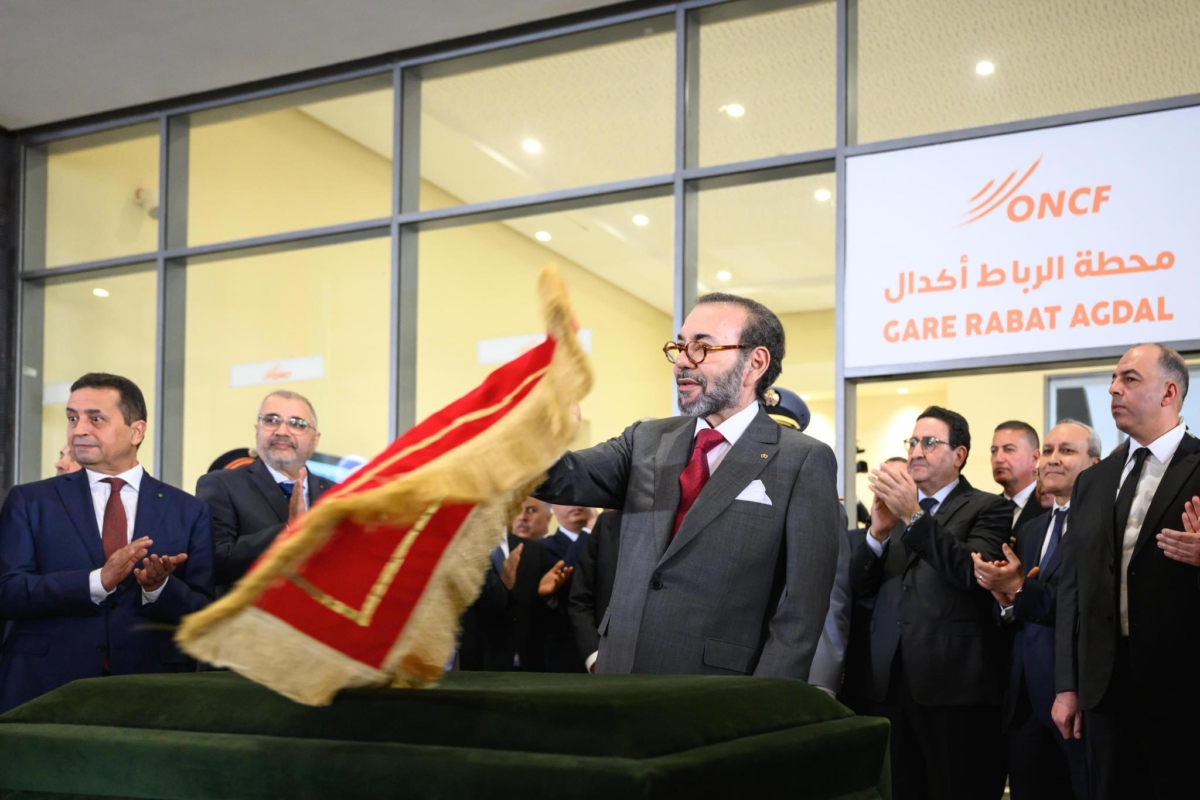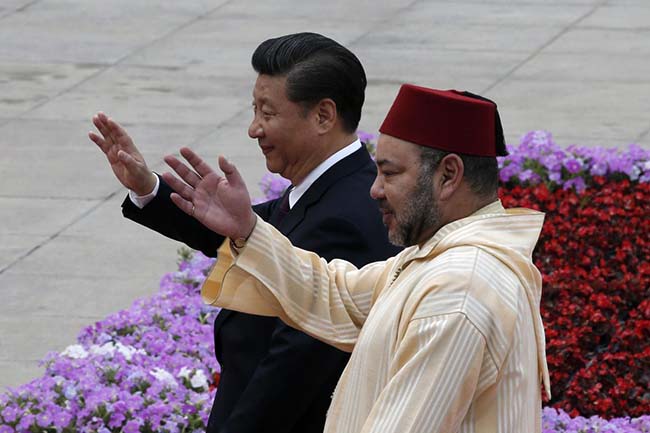King Mohammed VI launched on Thursday the construction of the Kenitra–Marrakech High-Speed Rail Line at the Rabat-Agdal train station, marking a major milestone in Morocco's efforts to modernize its transport infrastructure and promote sustainable mobility.
Spanning 430 kilometers, the new high-speed line reflects the King's vision to enhance the national rail network and aligns with Morocco's broader strategy for low-emission, inclusive transportation. Once completed, the line will significantly cut travel times between major cities—reducing the journey from Tangier to Rabat to one hour, Tangier to Casablanca to 1 hour 40 minutes, and Tangier to Marrakech to 2 hours 40 minutes, saving over two hours compared to current travel durations.
The project also connects Rabat to Casablanca’s Mohammed V International Airport in just 35 minutes and includes service to the new Benslimane stadium. A high-speed link between Fez and Marrakech is also in the pipeline, with an expected travel time of 3 hours 40 minutes.
With an investment of MAD 53 billion (excluding rolling stock), the Kenitra–Marrakech line is part of a broader MAD 96 billion program. This includes the purchase of 168 new trains at a cost of MAD 29 billion, aimed at modernizing the Moroccan National Railways Office (ONCF) fleet and supporting future rail expansions. The initiative also allocates MAD 14 billion for infrastructure maintenance and the development of urban train services in Casablanca, Rabat, and Marrakech.
The high-speed line is designed for a maximum speed of 350 km/h and will involve the construction of new stations, refurbishment of existing terminals in Rabat, Casablanca, and Marrakech, and the development of a train maintenance hub in Marrakech.
Beyond intercity travel, the project will boost local commuter services by freeing up capacity on the existing conventional rail lines. It aims to address urban mobility challenges and improve the quality and reliability of public transportation in Morocco’s main metropolitan areas.
The accompanying train acquisition program includes 18 high-speed trains, 40 intercity trains, 60 express shuttle trains, and 50 trains dedicated to urban transport networks. With a local integration rate of over 40%, the initiative is expected to create several thousand direct and indirect jobs and foster the emergence of a Moroccan rail manufacturing ecosystem.
Two key components define the program: the development of a train production facility and supply chain, and a joint venture between ONCF and manufacturers to ensure efficient and cost-effective train maintenance.
The project is being implemented with the expertise of leading international firms, including France’s Alstom for high-speed trains, Spain’s CAF for intercity trains, and South Korea’s Hyundai Rotem for urban trains, all under preferential financing terms.
This ambitious effort signals a new era for Moroccan rail, combining modernization, sustainability, and economic development under the leadership of King Mohammed VI.






